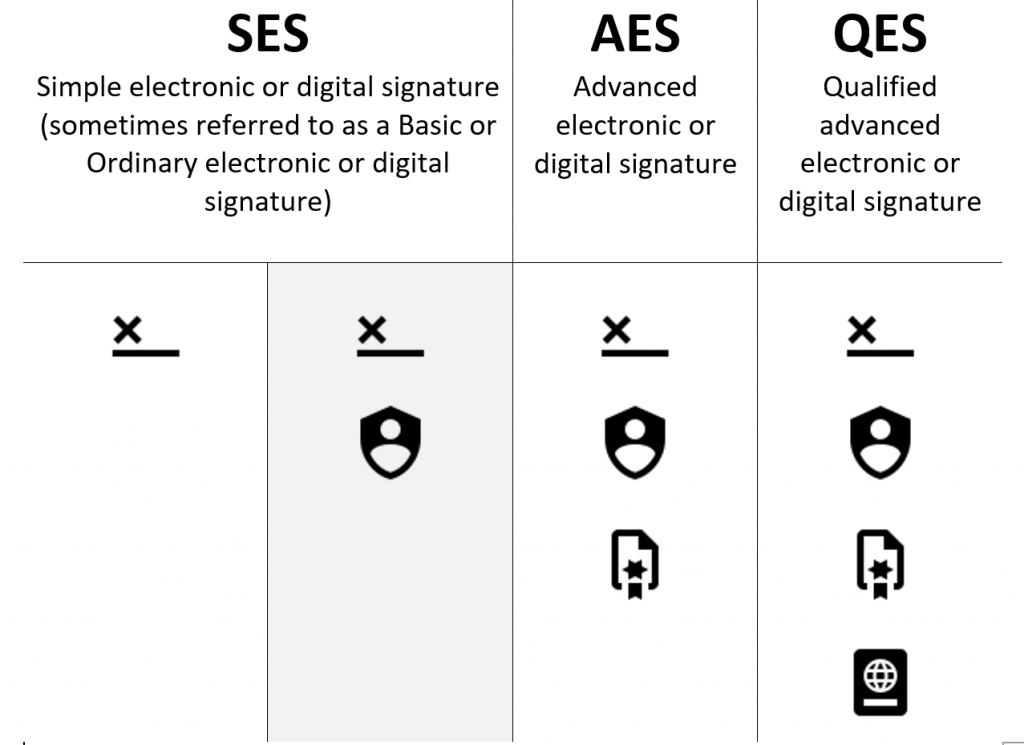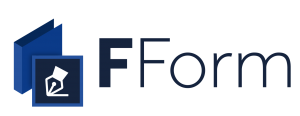
FForm is an easy-to-use and powerful tool to fill and sign documents digitally and provides instant access to documentation stored in DigiRecord.

Fast, Easy & Convenient
Documents can be digitally completed, signed, and stored to the cloud instantly, saving a lot of time and effort.
![]()
Work with your own documents
Your existing documents can be used.

Document Management with DigiRecord
Instant access to continuously updated documentation.
FForm ♡ DigiRecord
Increase office workflow and productivity
Make changes to your document and re-deploy updated versions in a matter of minutes.

Reduce costly errors
By working electronically, you’ll be able to collect and process data more efficiently, thus decreasing the chance for errors.

Legally valid*
FForm’s electronic signature matches to the first level of security and legal recognition of a document’s signature. It acquires greater legal value because FForm uses DigiRecord. DigiRecord requires MFA (Multi-Factor Authentication) and keeps an audit trail.

Environmentally friendly
Distributing and collecting electronic documents can significantly reduce paper, toner and postage, thereby helping you run a ‘greener’ office.
"People are able to pick this up easily. I’d recommend it to anybody, in any industry."


Not bound to a device
FForm works flawlessly on any Windows and Android device.

Not bound to a location
Signing anywhere, anytime.

Supports QR codes
Instantaneously turn any object into a smart object enabling direct access to documentation.

Supports search
Instantaneously find information in a document.

Supports PDF files
PDF is one of the most commonly used file types today. Annotate and sign any PDF file.
![]()
Supports Fillable PDF Forms
Fillable PDF Forms are faster, easier, and more convenient. Fillable PDF Forms provide 100% clear and legible text.

Our clients
Through the years, Thompres has gathered a lot of knowledge within various industries, among which Aerospace, Maritime, and Oil & Gas. FForm is a powerful and generic tool that creates added value for successful companies within many sectors:
✓ Tech industry
✓ Finance, insurance and assistance agents
✓ Medical industry
✓ Automotive
Want to see how FForm can help your business?
FForm can only function with a DMS (Document Management System). DigiRecord is a DMS and is built on a highly secured cloud space. Both FForm and DigiRecord are build using the latest technology available. Ease-of-use is a top priority.
DigiRecord users love FForm for its easy-to-use but unique annotating and signing features, not offered by the DigiRecord web interface. Hence DigiRecord promotes FForm as an Add-on.
FForm users love DigiRecord because it helps to easily manage and share documents in a secure way, and it features smart notifications. For more information on DigiRecord , see https://www.digirecord.nl/
Some typical documents:
- Inspection forms (e.g. service, fire safety, hand-over)
- Commissioning and testing documentation
- Acceptance testing documentation*
- Registration forms
- Financial statements*
- Tax return*
- Employment contracts*
* These documents require (multi-party) signing.
Let’s start to understand what an electronic signatures is.
An electronic signature or digital signature is an electronic variant of a handwritten signature.
Many countries, including the Netherlands, have been implementing the eIDAS (Electronic Identification, Authentication and Trust Services) regulation. eIDAS is an EU regulation on electronic identification and trust services for electronic transactions in the European Single Market. This law states that a digital signature has the same legal consequences as a written signature.
Three different types of digital signature forms are available:
- Simple electronic or digital signature (SES) (sometimes referred to as a Basic or Ordinary electronic or digital signature)
- Advanced electronic or digital signature (AES)
- Qualified advanced electronic or digital signature (QES)
The difference between the eIDAS types of signature is mainly the level of security that each type has, and the complexity of the signer identity verification system they each use. The strength of the signature thus lies in the degree of confidence it provides as to the identification of the signer and in the proof that the document is indeed the signed one.
Note that for SES and AES, the burden of proof is on the business. For QES, the burden of proof is on the signer.
FForm’s electronic signature matches to the first level of security and legal recognition of a document’s signature (i.e. SES). However, it acquires greater legal value because FForm uses DigiRecord. DigiRecord adds Multi-factor authentication, document versioning, and keeps an audit trail. We call this the Progressive electronic or digital signature (PES).

FForm currently does not offer AES or QES at this time, however FForm in combination with DigiRecord most likely provides you with an appropriate level of validity and security for your use case. Note that AES is recommended for large financial transactions or for signing documents that may present significant legal stakes. Note that QES is required by law in certain use cases.
It is important to note that companies tend to go by default to the one with the highest level of security, even though it might be overkill for their needs and actually be counterproductive. Choosing the most suitable type of signature for your use case is a balancing act between accessibility, user friendliness, signer assurance, and risk mitigation.
FForm can easily implement the AES and QES via a third party API. Please contact us if you have this requirement.
Let’s start to understand what an electronic signatures is.
An electronic signature or digital signature is an electronic variant of a handwritten signature.
Many countries, including the Netherlands, have been implementing the eIDAS (Electronic Identification, Authentication and Trust Services) regulation. eIDAS is an EU regulation on electronic identification and trust services for electronic transactions in the European Single Market. This law states that a digital signature has the same legal consequences as a written signature.
Three different types of digital signature forms are available:
- Simple electronic or digital signature (SES) (sometimes referred to as a Basic or Ordinary electronic or digital signature)
- Advanced electronic or digital signature (AES)
- Qualified advanced electronic or digital signature (QES)
The difference between the eIDAS types of signature is mainly the level of security that each type has, and the complexity of the signer identity verification system they each use. The strength of the signature thus lies in the degree of confidence it provides as to the identification of the signer and in the proof that the document is indeed the signed one.
Note that for SES and AES, the burden of proof is on the business. For QES, the burden of proof is on the signer.
FForm’s electronic signature matches to the first level of security and legal recognition of a document’s signature (i.e. SES). However, it acquires greater legal value because FForm uses DigiRecord. DigiRecord adds Multi-factor authentication, document versioning, and keeps an audit trail. We call this the Progressive electronic or digital signature (PES).

FForm currently does not offer AES or QES at this time, however FForm in combination with DigiRecord most likely provides you with an appropriate level of validity and security for your use case. Note that AES is recommended for large financial transactions or for signing documents that may present significant legal stakes. Note that QES is required by law in certain use cases.
It is important to note that companies tend to go by default to the one with the highest level of security, even though it might be overkill for their needs and actually be counterproductive. Choosing the most suitable type of signature for your use case is a balancing act between accessibility, user friendliness, signer assurance, and risk mitigation.
FForm can easily implement the AES and QES via a third party API. Please contact us if you have this requirement.
A PDF file (without form fields) is one of the most commonly used file types today. FForm allows you to annotate and sign any PDF file (without form fields). For this to work flawlessly, you need the correct device. Please read the ‘What device are supported?’.
Fillable PDF Forms are faster, easier, and more convenient. Fillable PDF Forms provide 100% clear and legible on screen text. A Fillable PDF Form is the preferred file format for any device, especially for devices with a display smaller than 10 inch or when it does not support a digital pen.
Whether it’s a scan or a form made with Microsoft Word, Excel, or any other application, you can make it smarter with text fields and signature fields.
A form made with OpenOffice or LibreOffice can be exported to a Fillable PDF Form (for free)! A form made with Microsoft Word or Excel cannot be exported to a Fillable PDF Form. For this, a PDF Form builder tool (e.g. Adobe Acrobat) is needed. For more information and step-by-step instructions, see https://www.ionos.com/digitalguide/online-marketing/online-sales/create-fillable-pdf-forms/
Forms can be generated with customer data using PM-DocMaker® (also Pro Management Software N.V. product). For more information, see https://www.promanagement.nl/infotheek/nieuws/614-een-greep-uit-handige-functionaliteiten-van-docmaker
FForm works flawlessly on any modern Android, Windows, and iOS device. Android and iOS devices can even run FForm without installing it (being an Instant App)!
NOTE: Annotating and signing a standard PDF (non-Fillable PDF Form) should be done with a large tablet and a digital pen. It is advised to use a tablet with a display of 10 inch or larger and a modern (fast) digital pen. At this time, we recommend the following devices as we have tested them succesfully:
- Samsung Galaxy Tab Active Pro (Android)
- Microsoft Surface Pro 7 (Windows)
- Onyx BOOX Note2 & Max3 (E-reader with Android) IN TEST
QR codes can instantaneously turn an object into a smart object enabling direct access to documentation.
Imagine this maintenance scenario: Using a tablet, an electrician scans a QR code on a device. Within seconds, the tablet shows detailed information specific to that device. It is all there at his fingertips: instructions for servicing it, diagrams, manuals, checklists and more.
FForm enables users to generate QR codes that link to a dossier, a folder, or a document. The generated QR codes can be printed on a label, and pasted on an object. With FForm Pro, users can integrate existing QR codes and barcodes.
NOTE: Labels come in many variants. Please send us an email if you need assistance. We will advise you and – if desired – can provide you with the correct labels for a reasonable price.

